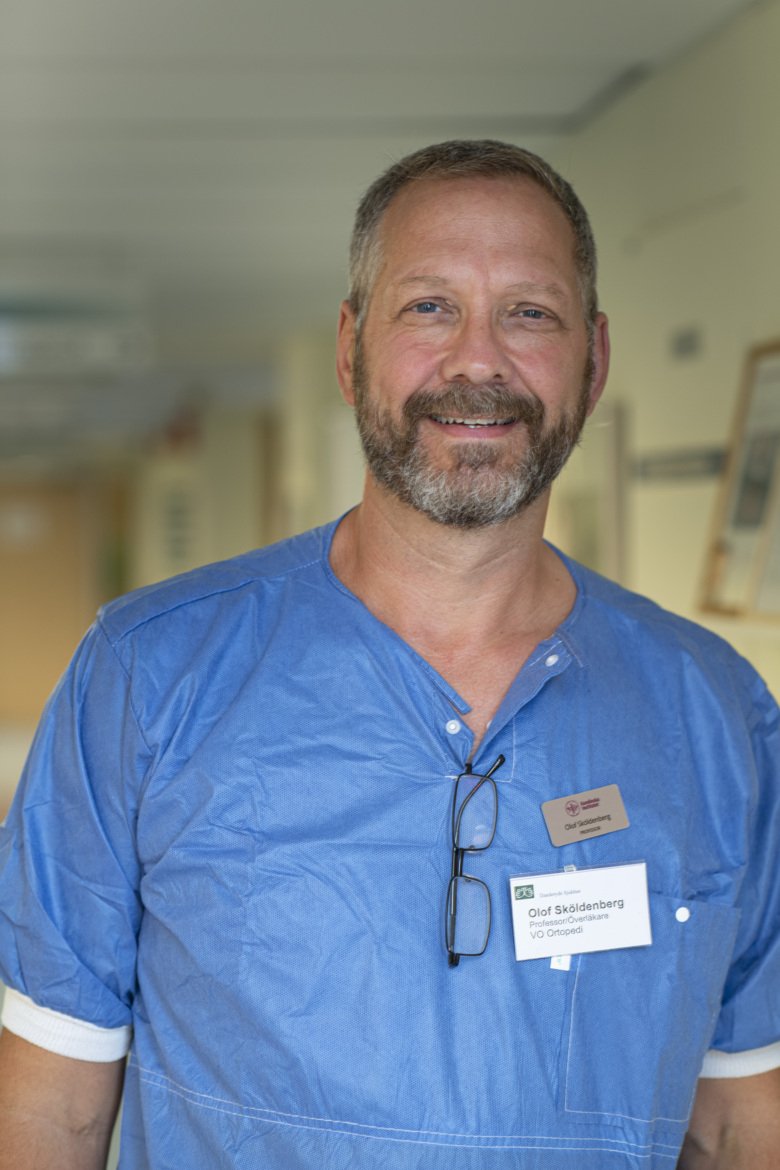Clinical improvements for joint operations
Olof Sköldenberg’s research aims to contribute to better treatment and diagnosis of injured joints – especially hip joints. In recent years, among other activities, he has investigated how artificial intelligence (AI) can be used as support in the analysis of orthopaedic X-ray images.

What are you researching?
“I am an orthopaedic surgeon and my research concerns improved treatment methods for hip fractures and other injuries to shoulder joints, knee joints and wrists. One of my main interests is hip replacement surgery – our most common major surgical procedure. By comparing treatment A and B in clinical research we are able to continuously improve care in a way that collectively makes a huge difference. Over time, I have broadened my research to also include the organisation at the clinic as well as AI as a supporting tool in orthopaedic diagnostics and treatment.”
What conclusions have you arrived at?
“Our clinical trials have touched on a great variety of different factors – from surgical incisions to comparisons between different types of hip prostheses to the question of in which cases prostheses should be used. We are one of the research teams that have shown how important doing an operation as soon as possible after a hip fracture is, and this has led to major changes in the medical care. Twenty years ago, the normal waiting time for doing an operation was 2-3 days; today, almost 80 percent are operated on within 24 hours. The results can be seen in the form of faster rehabilitation, fewer complications, and better survival rates.”
What’s currently happening with your research?
“For a number of years, we have been researching neural networks, as a part of AI, as a tool in orthopaedics. For several years now, our AI has been a part of our regular activities in orthopaedics at Danderyd Hospital, where its analyses of X-ray images are on par with the quality of senior physicians. The next step in this work, which is led by my very competent former doctoral student Max Gordon, is to get the AI to suggest treatments. Such systems can be of significant help not only in developing countries, but also in industrialised countries such as in Swedish primary care. I am also presently leading a larger study on whether air purifiers in the operating room can lead to fewer cases of infected surgical wounds. Infections are the most serious complication with orthopaedic surgery.”
Text: Anders Nilsson, first published in From Cell to Society 2020.
About Olof Sköldenberg
Professor of Orthopaedics at the Department of Clinical Sciences, Danderyd Hospital
Olof Sköldenberg was born in Stockholm in 1967. He started in the medical field with a nursing education, obtaining a degree in 1991 and became a surgical nurse in 1992. In 1999 he graduated from his medical doctor studies at Uppsala University, and in 2010 he became a specialist in orthopaedic surgery.
Sköldenberg obtained a PhD from KI in 2010 after defending his doctoral thesis. He has worked as senior physician at Danderyd Hospital since 2010, as well as a researcher at KIDS – KI’s Department of Clinical Sciences, Danderyd Hospital. In 2014, he became an associate professor and in 2014-2018 he had a clinical postdoc, paid for by the ALF agreement. Since 2018, he has been Chairman of the Swedish Hip and Knee Association.
Olof Sköldenberg was appointed Professor of Orthopaedics at Karo-linska Institutet on June 1, 2020.
